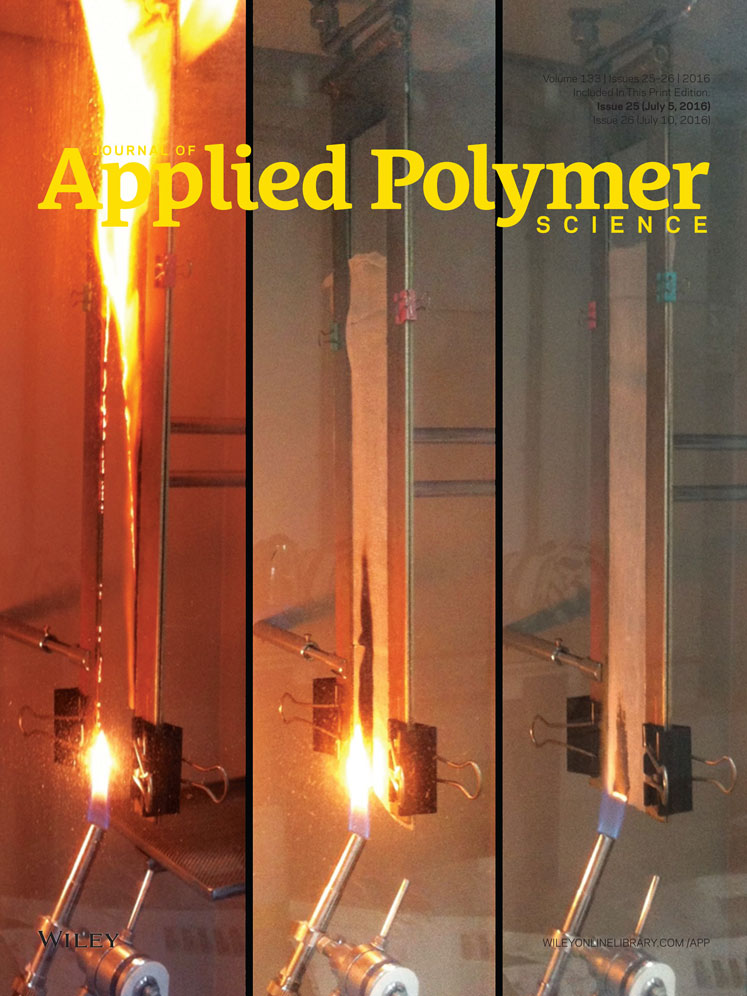Physical and antibacterial properties of polyvinyl alcohol films reinforced with quaternized cellulose
ABSTRACT
Hydroxypropyltrimethylammonium chloride cellulose (CM) was homogeneously synthesized in a NaOH/urea aqueous solution. CM was blended in a polyvinyl alcohol (PVA) matrix to produce composite films via co-regeneration from the alkaline solution. The PVA film and the blend films were characterized by Fourier transform infrared spectroscopy, X-ray diffraction measurements and scanning electron microscopy. The mechanical properties, water swelling ratio, hydrophobicity, light transmission, and antibacterial activity against Staphylococcus aureus and Escherichia coli were also evaluated. The results showed that CM could interact with PVA by hydrogen bonding and exhibit an obvious reinforcement effect. The addition of CM improved the surface roughness, hydrophobicity and water swelling ratio, especially, the antibacterial activity. However, compared with neat PVA film, the elasticity and optical transmission decreased. The increased tensile strength, powerful antibacterial activity, and medium light transmission indicate that the biocompatible blend film will become an exceptional alternative in functional bio-material field. © 2016 Wiley Periodicals, Inc. J. Appl. Polym. Sci. 2016, 133, 43552.




